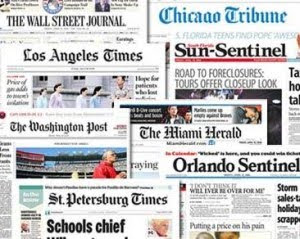I know that I talk a bit about Kansas City getting (or usually NOT getting) specific coupons that aren’t found in other areas. I know that it is frustrating, but there are actually reasons. Carrie at Pocket Your Dollars has written a great article explaining all of this.
Coupons are a marketing tool that companies use to advertise and promote their products with hopes of increasing product sales and enticing new customers. It is frustrating though, when we hear of others getting a coupon we didn’t and we can’t figure out why.
Next time that happens to you, consider these four potential reasons.
Advertisers select the geographic area they would like to reach with their advertisement (or in this case, with their coupons). Geo-targeting for advertising and coupon distribution happens at a local level and on a national scale.
Locally, people receiving the same newspaper, but living across town from each other, could receive different advertisements and coupons within their paper. Advertisers can select their geographic distribution by micro-region, like zip code.
Nationally, the same principle holds true, but it’s more dramatic. Manufacturers design their coupon campaigns to entice consumers in different regions with different shopping habits to purchase their product. Regions where a company would like to increase sales and bring in more new customers will receive higher-value coupons than areas where sales are naturally high.
A joy of living in the Twin Cities is that, frankly, we have two cities. That also means we have two newspapers, two Sunday editions and two different sets of coupons. Advertisers select where they want to spend their precious advertising dollars, and they usually opt for the paper with the larger circulation. As a consumer that means the larger of the two Sunday editions will likely contain more and higher-value coupons than its lesser-read counterpart.
Coupon-loving folks often pick up extra copies of the Sunday paper. The easiest way to do it is stop into a gas station or grocery store and grab a few from the newsstand. Many of us have learned though, that newsstand papers may not contain all the coupon inserts that come in the home-delivered version. Unfortunately, you cannot assume that it was a mistake.
Advertisers buy space within XXX number of copies of the newspaper. Their first priority is the home delivered paper, which means you are sure to get the most coupons and advertisements when you have the Sunday paper delivered to your door. After home-delivered papers receive their inserts, the advertiser might have budget left for YYY number of copies to be included in newsstand copies, but YYY number of copies may not be enough for every newsstand issue.
With too few of these “extra” inserts/advertisements, it is common that some newsstand papers receive certain advertisements and coupon inserts while others don’t. Complicating this further is the reality that newsstand papers are not delivered to their locations in a consistent, predictable pattern. That means papers at gas stations next to each other might have different inserts one week and the same set the following week. In plain speak, we could say that there isn’t a rhyme or reason to which newsstand location gets which copies.
Most surprising to me, is the reality that an advertiser or manufacturer may actually want different folks within the same geography to receive different coupons. Advertisers can requests to print both an A version and B version of their circular with the instructions to insert those into papers in a certain pattern, for instance every XXX number get version A and everyone else gets version B. Truly, it is a type of market research, where the advertiser wants to know which version generates more desirable results.
In conclusion, it is amazing to realize that the advertising happening around us is not nearly as haphazard as it seems. Companies are intentional to reach us with their well-crafted messages and provide us the coupons they think we need to purchase their products.
Your turn: What did you find most surprising from this article?
**Information for this article came from two industry insiders that have asked to be kept anonymous. One has years of experience in the newspaper industry and the other is a high-ranking member of the coupon strategy team for a large consumer packaged goods company (think Kimberly Clark, Proctor & Gamble, General Mills or the like). They shared tricks of the trade with me that they have learned through their years of experience.
Carrie Rocha got her family out of $50,000 of debt in less than three years. She blogs about her experience and shares money-saving advice at Pocket Your Dollars. She shares from her experience monthly on Wall Street Journal Radio (http://www.wsjradio.com/WSJAM.html) and you’ll find her in the March 22 issue of Woman’s World magazine and in May’s Redbook magazine.
